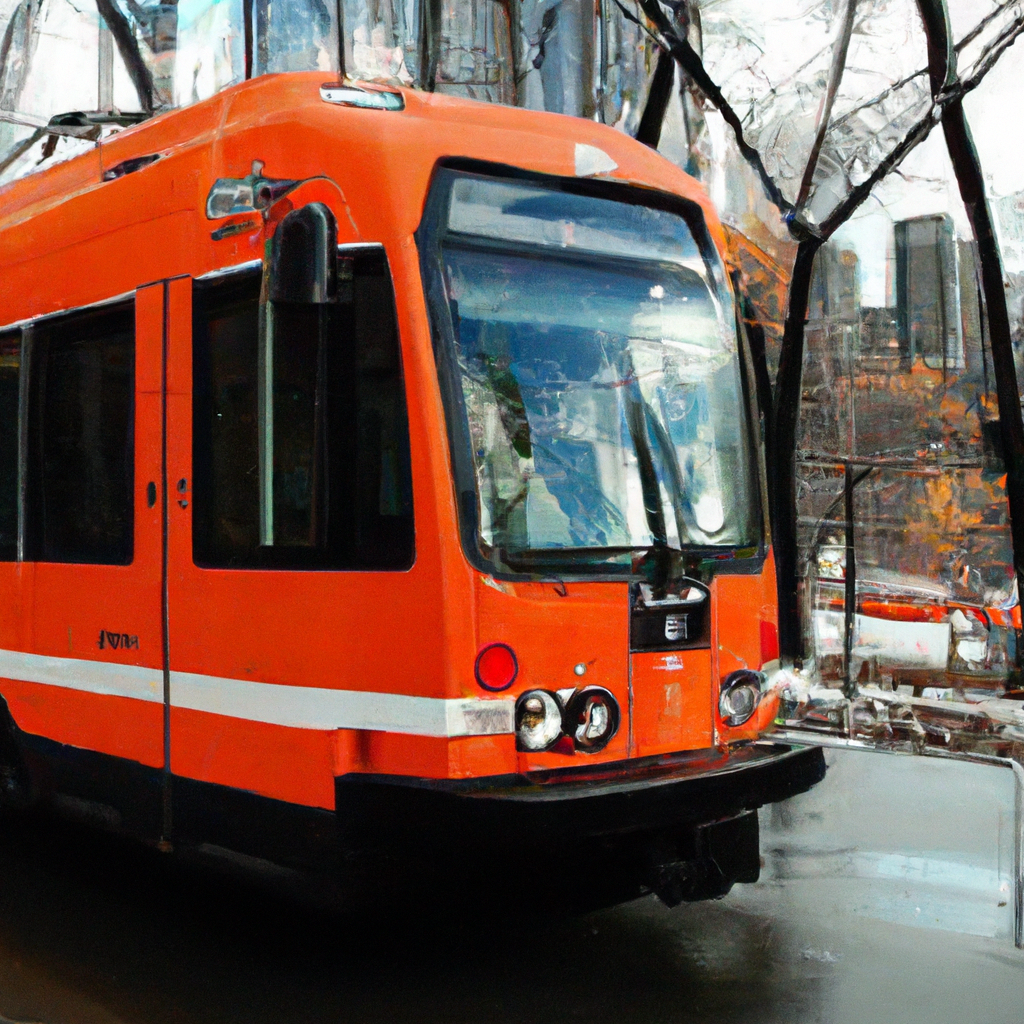
How Do I Handle Transportation In Cities With Limited Or No Public Transit?
Navigating cities with limited or no public transit can be a daunting task, particularly for those accustomed to relying on buses, trains, or trams. Whether you find yourself exploring a small town with inadequate transportation options or a bustling metropolis struggling to keep up with the demands of its population, fear not! This article is here to provide you with practical tips and alternative methods to make your transportation experience in such cities a breeze. From utilizing ride-sharing apps to renting bicycles or even exploring walking options, we’ve got you covered with a variety of strategies to help you seamlessly navigate these urban landscapes.

Planning ahead
Planning ahead is crucial when it comes to navigating transportation in cities with limited or no public transit. By taking the time to understand the city’s transportation infrastructure, researching alternative transportation options, and creating a transportation budget, you can ensure a smooth and stress-free travel experience.
Understanding the city’s transportation infrastructure
Before you embark on your journey, it is important to familiarize yourself with the city’s transportation infrastructure. Find out if there are any public transit systems in place, such as buses, trains, or light rail. Take note of their routes, schedules, and fares, if applicable. This information will give you a basic understanding of the available transportation options and help you plan your routes accordingly.
In cities with limited or no public transit, it is even more important to explore alternative transportation methods. You may need to rely on other means of getting around, such as walking, biking, or using taxis or rideshare services. Doing your research ahead of time will save you valuable time and energy later on.
Researching alternative transportation options
When public transit is limited or non-existent, it is essential to explore alternative transportation options. This could include walking and biking, using taxis or rideshare services, renting a car or scooter, or even joining a carpool program. Each option has its own set of advantages and considerations, so it is important to do your research and choose the method that best suits your needs and preferences.
Creating a transportation budget
To ensure that you make the most of your transportation options without overspending, it is advisable to create a transportation budget. Consider how much you are willing to spend on transportation during your stay in the city, and allocate funds accordingly. Take into account the costs of different transportation methods, such as public transit fares, taxi or rideshare fees, car or scooter rentals, and any additional expenses like parking fees. By setting a budget in advance, you can manage your expenses effectively and avoid any financial surprises.
Walking and Biking
In cities with limited or no public transit, walking and biking can be excellent alternatives for getting around. Not only are these options cost-effective, but they also offer numerous health benefits and allow you to explore the city at a leisurely pace.
Exploring walkable neighborhoods
Before setting off on foot, take some time to research and identify neighborhoods that are known for being pedestrian-friendly. These neighborhoods usually have well-maintained sidewalks, ample crosswalks, and a variety of amenities within walking distance. Look for ample green spaces, markets, shops, and cafes, as these are indicators of a vibrant and walkable neighborhood. By exploring these areas, you can enjoy the sights and sounds of the city while getting some exercise.
Using bike-sharing programs
If walking isn’t your preferred method of transportation, consider using bike-sharing programs. These programs typically allow you to rent a bicycle for a short period of time, allowing you to cover larger distances in a shorter amount of time. Research bike-sharing options available in the city you are visiting and familiarize yourself with their locations and rental terms. Many bike-sharing programs have apps that make renting a bike quick and easy. Just grab a bike, pedal away, and return it to a designated drop-off location when you’re done.
Considering electric scooters
Electric scooters have gained popularity in recent years as a convenient and eco-friendly mode of transportation. Many cities now have electric scooter rental services, which allow you to rent a scooter for a short period of time. Electric scooters can be a fun and efficient way to navigate the city, especially for shorter distances. Before renting, make sure to familiarize yourself with the local traffic regulations and always prioritize safety by wearing a helmet and following all traffic rules.

Using Taxis and Rideshare Services
In cities with limited or no public transit, taxis and rideshare services can become your lifeline for getting around. These services offer convenience and flexibility, allowing you to travel to your desired destinations with ease.
Identifying local taxi services
Before relying on taxis, it is important to identify local taxi services in the city you are visiting. Research reputable taxi companies and familiarize yourself with their contact information. It is also a good idea to check if there are any taxi stands or designated pickup areas near your accommodation or popular tourist spots. This way, you can quickly and easily hail a taxi whenever you need one.
Using rideshare apps
Rideshare apps have revolutionized the way we travel, providing a convenient and often more cost-effective alternative to taxis. Popular rideshare apps like Uber or Lyft are available in many cities worldwide. Before your trip, make sure to download the app and set up an account. Familiarize yourself with how the app works, such as how to request a ride, estimate fares, and track your driver’s location. Rideshare apps often provide more transparency and convenience compared to traditional taxis.
Comparing costs and reliability
When deciding between taxis and rideshare services, it is important to consider both cost and reliability. Taxis may have a slightly higher base fare, but they may be more readily available, especially during peak times or in areas where rideshare services are limited. On the other hand, rideshare services often offer upfront pricing, eliminating any surprises when it comes to the final fare. Consider your specific needs and preferences, keeping in mind factors such as availability, cost, and convenience.
Car Rentals
Renting a car can be a great option for exploring cities with limited or no public transit, as it provides you with the freedom and flexibility to travel at your own pace. Whether you’re planning day trips to nearby attractions or simply want the convenience of having your own transportation, renting a car can enhance your travel experience.
Finding car rental agencies
To rent a car, you’ll need to find car rental agencies in the city you’re visiting. Research reputable agencies and compare their rates, terms, and available vehicle options. Look for agencies that have good customer reviews, transparent pricing, and clear terms and conditions. Many car rental agencies have online booking systems, making it easy to secure your rental in advance.
Understanding rental terms and conditions
Before signing any rental agreement, it is crucial to thoroughly read and understand the rental terms and conditions. Take note of important details such as rental durations, mileage limits, fuel policies, and insurance coverage. Rental terms and conditions may vary among different agencies, so it’s important to choose an agency that meets your specific requirements and preferences. Be aware that additional fees may apply for extras such as GPS navigation systems or child car seats.
Considering carsharing options
If you only need a car for short periods of time or on an occasional basis, consider carsharing options. Carsharing allows you to rent a car by the hour or day, giving you access to a vehicle without the long-term commitment or expense of traditional car rentals. Carsharing services often have designated parking areas where cars can be picked up and dropped off. Look for local carsharing programs or check if well-known car rental agencies offer carsharing services in the city you are visiting.

Motorcycle and Scooter Rentals
For those seeking a more adventurous way to explore the city, renting a motorcycle or scooter can be an exciting option. Not only do motorcycles and scooters offer a thrilling ride, but they also provide flexibility and maneuverability in navigating through traffic.
Researching motorcycle rental services
Before renting a motorcycle or scooter, research local rental services that offer these vehicles. Look for reputable rental agencies that have well-maintained and reliable motorcycles/scooters. Read customer reviews to ensure that you’ll be renting from a trustworthy provider. It’s important to rent from a legitimate and reputable agency to ensure your safety and the reliability of the vehicle.
Learning local traffic regulations
Before you hit the road on a motorcycle or scooter, it is essential to familiarize yourself with the local traffic regulations. Different cities may have different rules and regulations regarding the operation of motorcycles and scooters, such as helmet requirements, licensing restrictions, and speed limits. Understand and follow these regulations to ensure your safety and to avoid any legal issues during your travels.
Renting and operating a scooter
Renting and operating a scooter can be a fun and efficient way to explore the city. Many cities now have scooter rental services that allow you to rent a scooter for a short period of time. These services often have apps that make renting and locating available scooters quick and easy. Ensure you understand how to operate the scooter safely and responsibly, and always prioritize your safety by wearing a helmet, following traffic rules, and being aware of your surroundings.
Public Transportation Alternatives
In cities with limited or no public transit, there may be privately-owned buses, shuttles, or community vanpools that can offer alternative transportation options. These options may be particularly useful for longer distances or when traveling with a group.
Identifying privately-owned buses or shuttles
Search for privately-owned buses or shuttles that operate in the city you’re visiting. These services may cater to specific routes or attractions, such as airport shuttles or organized group tours. Look for information on their schedules, fares, and pick-up/drop-off locations. Privately-owned buses or shuttles can be a convenient and cost-effective option, especially if they align with your specific travel needs.
Exploring community vanpools
Community vanpools are a popular transportation option in many cities, especially for commuters. These services involve groups of people sharing a van and traveling together on a regular schedule, often to and from specific destinations like workplaces or popular shopping areas. If you’re staying in a city for an extended period of time and have a consistent travel route, consider exploring community vanpool options. Not only can these services save you money on transportation costs, but they also provide a sense of community and camaraderie with fellow travelers.
Joining a carpool program
Carpool programs are another great alternative for getting around cities with limited or no public transit. These programs involve sharing rides with others who have similar travel routes or destinations. Online platforms and apps make it easy to connect with potential carpool partners and arrange shared rides. Carpooling not only reduces the number of cars on the road, but it can also help save money on transportation costs and contribute to a greener environment.

Use of Local Trains and Light Rail
While cities with limited or no public transit may not have extensive train or light rail systems, it’s worth checking if there are any local train or light rail services available. These transportation options can provide efficient and reliable means of travel, especially for longer distances or when exploring nearby cities or suburbs.
Identifying local train or light rail services
Research if there are any local train or light rail services in the city you’re visiting. Check for train stations or light rail stops near your accommodation or popular tourist areas. Look into the routes, schedules, and fares of these services to determine if they align with your travel plans. Local trains or light rail systems can be a great way to travel between different neighborhoods or nearby cities, offering scenic views and a comfortable ride.
Understanding train schedules and fares
If local train or light rail services are available, it is important to familiarize yourself with their schedules and fares. Trains and light rail services often run on fixed schedules, so plan your trips accordingly to avoid missing a train. Check for any peak or off-peak hours that may affect fare prices. Understanding the ticketing system and fare structure beforehand will help you navigate the train or light rail services with ease and avoid any confusion.
Exploring multi-modal options
When using local trains or light rail services, consider exploring multi-modal options to enhance your travel experience. Many cities have integrated public transit systems that allow you to seamlessly transfer between different modes of transportation, such as buses, taxis, or bike-sharing programs. Look for multi-modal transportation options that offer convenience and flexibility, allowing you to reach your desired destinations efficiently.
Hiring a Private Driver
If you prefer a more personalized and luxurious transportation experience, hiring a private driver can be a viable option. This option provides you with the convenience of having a dedicated driver at your disposal, allowing you to sit back and enjoy the ride.
Finding trustworthy private driver services
When hiring a private driver, it is crucial to find a trustworthy and reliable service. Ask for recommendations from locals or fellow travelers who have previously used private driver services in the city you’re visiting. Research and compare different private driver companies, taking into consideration factors such as their reputation, customer reviews, and pricing. It is also important to check if the private driver service is licensed and insured for your safety and peace of mind.
Negotiating rates and terms
Before hiring a private driver, it is recommended to negotiate rates and terms to ensure a fair and satisfactory agreement. Discuss the scope of the services you require, such as the number of hours, specific destinations, and any additional requests you may have. Be clear about your expectations and ask for a detailed breakdown of the costs involved. Remember that rates may vary depending on factors such as time of day, distance traveled, and additional services requested.
Considering the benefits and limitations
While hiring a private driver can offer numerous benefits, it’s important to consider the limitations as well. Private driver services can be more expensive compared to other transportation options, so it is essential to factor in the cost when budgeting for your trip. Also, note that relying solely on a private driver may limit your independence and the ability to explore at your own pace. However, if you value comfort, convenience, and personalized service, hiring a private driver can elevate your transportation experience in a city with limited or no public transit.
Renting or Sharing a Bicycle
For eco-conscious travelers or those looking to stay active during their visit, renting or sharing a bicycle can be an excellent option. Bicycles provide you with the freedom and flexibility to explore the city at your own pace, all while reducing your carbon footprint.
Researching bike rental options
Before you can hop on a bicycle, you’ll need to research bike rental options available in the city you’re visiting. Look for reputable bike rental companies that offer well-maintained bikes and reasonable rental rates. Some bike rental companies may also provide helmets and locks for added safety and security. Check if there are multiple rental locations throughout the city or if you need to pick up and drop off the bike at a specific location.
Joining bike-sharing programs
Many cities now have bike-sharing programs that allow you to rent a bike for a short period of time. These programs usually have designated bike stations throughout the city where you can pick up and drop off bikes. Research if the city you’ll be visiting has a bike-sharing program, and find out how it works, including membership fees, rental fees, and any applicable time limits or restrictions. Bike-sharing programs can be a convenient and cost-effective option, especially for short trips or when exploring areas with limited parking options.
Understanding safety precautions
When cycling in a city, it is important to prioritize safety. Familiarize yourself with local traffic regulations and cycling laws. Wear a helmet at all times and be aware of your surroundings. Avoid cycling during peak traffic hours, if possible, and use dedicated bike lanes or designated cycling routes when available. Lock your bike securely when not in use to prevent theft. By adhering to these safety precautions, you can have an enjoyable and safe biking experience while exploring the city.
Navigating the City on Foot
Exploring the city on foot is a great way to immerse yourself in the local culture and experience the sights and sounds up close. Walking allows you to discover hidden gems, interact with locals, and truly get a feel for the city.
Using maps and navigation apps
When navigating the city on foot, having a map or navigation app can be extremely helpful. Carry a detailed map or use a GPS navigation app on your smartphone to assist you in finding your way. Most smartphones have built-in map apps that can provide step-by-step directions and real-time updates. Look for apps that offer offline maps, as internet connectivity may be limited or unreliable in certain areas. By using maps or navigation apps, you can avoid getting lost and have a more enjoyable walking experience.
Exploring pedestrian-friendly routes
Some cities are more pedestrian-friendly than others, with dedicated sidewalks, pedestrian-only areas, and well-marked crosswalks. Take the time to research and identify pedestrian-friendly routes in the city you’re visiting. Look for areas with wide, well-maintained sidewalks and minimal traffic congestion. Consider visiting parks, promenades, or waterfront areas that are known for their walkability. Planning your walking routes in advance will ensure a smoother and more enjoyable experience.
Considering personal safety
While walking can be a safe and enjoyable way to explore a city, it is important to prioritize personal safety. Keep your belongings secure and be mindful of your surroundings, especially in crowded or unfamiliar areas. Avoid walking alone late at night, and stick to well-lit and populated areas as much as possible. If you have concerns about personal safety, consider walking with a companion or joining organized walking tours led by local guides. By taking these precautions, you can confidently explore the city on foot while keeping yourself safe.
In cities with limited or no public transit, it may require some extra effort and research to navigate transportation effectively. However, by planning ahead, considering alternative transportation options, and staying open to new experiences, you can successfully navigate the city and make the most of your time there. Whether you choose to walk, bike, use taxis or rideshare services, rent a car or scooter, take advantage of public transportation alternatives, hire a private driver, or explore the city on foot, each transportation method offers its own unique advantages and considerations. Embrace the adventure and enjoy your journey through the city with limited or no public transit!




